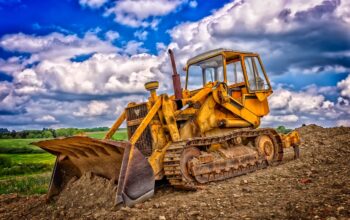Here’s a snapshot of 2025’s engineering milestones that are already reshaping how we live, work, and power our world:
1. Safer Batteries Promise 1,000 km Electric Rides
South Korean engineers cracked the code on next-gen batteries that could eliminate explosion risks while offering enough juice for 1,000 km drives. Their fix? Redesigning electrodes in lithium-sulfur batteries to stop oxygen buildup – the same process that makes birthday candles flicker, but disastrous in energy storage. “This isn’t just lab talk,” says a lead researcher. “We’re seeing real prototypes that could hit production lines within two years.”
2. Construction Waste Gets a Second Life
Imagine demolished buildings rising again as fresh concrete. Researchers in Brazil and the U.S. have developed a method to recycle cement rubble into new low-carbon building material. Using demolition debris and industrial byproducts, they’ve created a circular system that cuts construction emissions by up to 40%. Early tests show the recycled version matches traditional concrete’s strength – a gamechanger for cities drowning in construction waste.
Digital Twins: The Crystal Ball for Infrastructure
Engineers are increasingly relying on “virtual clones” of bridges, factories, and power plants to predict failures before they happen. These digital twins – imagine a Sims game for infrastructure – use real-time data from sensors to simulate stress tests, weather impacts, and even crowd movements. A Deloitte report highlights how this tech helped slash maintenance costs at a Japanese smart city project by 30% last quarter.
4. Wind Energy Smashes Records Amid Growing Pains
The planet added enough wind turbines in 2024 to power Spain – a record 117 gigawatts. But the Global Wind Report 2025 warns that installations must triple by 2030 to hit climate targets. Emerging markets like Saudi Arabia and Uzbekistan are becoming unlikely wind powerhouses, while Germany struggles with “not-in-my-backyard” protests. The solution? Smarter grids and standardized turbine designs that ease public concerns.
5. Robot Crews Take Hazardous Jobs
From squirrel-inspired parkour robots to construction droids that weld in toxic environments, 2025 is seeing automation tackle tasks too dangerous or precise for humans. A Princeton-developed surgical bot recently made headlines for performing delicate nerve repairs with sub-millimeter accuracy. Meanwhile, autonomous “rover” fleets are mapping mines and inspecting nuclear sites worldwide – keeping human workers safely aboveground.
Why This Matters: These innovations aren’t just shiny gadgets. They’re solving real-world headaches – preventing battery fires in EVs, keeping construction costs down, and helping renewable energy scale faster. As one industry veteran put it: “Engineering’s not about building perfect systems anymore. It’s about building systems that fail safely and fix themselves.”
References:
- https://www.enr.com/articles/60641-2025-top-500-design-firms-design-market-shifts-overnight
- https://techxplore.com/engineering-news/
- https://www.dxbnewsnetwork.com/top-10-technology-innovations-to-watch-in-2025
- https://www.springernature.com/gp/librarians/the-link/rd-blogpost/future-engineering-sustainability-tech/27772010
- https://www.nucamp.co/blog/this-weeks-latest-tech-news-in-the-us–sunday-april-20th-2025-edition
- https://www.montana.edu/usp/research_celebration/2025%20SRC%20Program%20Updated.pdf
- https://www.compositesworld.com/news/gwec-launches-2025-global-wind-report
- https://www.ttic.edu/news/?trk=public_post-text



